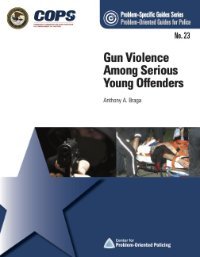By Eugenio Weigend Vargas, Lynna Kaucheck and Allison Jordan
Michigan has taken important steps in passing laws that prevent guns from falling into the hands of individuals who pose a risk to themselves or others. According to the latest scorecard from the Giffords Law Center to Prevent Gun Violence, Michigan received a “C” grade for the strength of its gun laws in 2020. The state requires individuals to have a permit before they can purchase a handgun from a private seller, a form of law that a growing body of research suggests is effective at reducing gun homicides. The state also requires private gun owners to report missing or stolen firearms. These actions have worked: Compared with other states, Michigan ranked 31st in terms of gun deaths per every 100,000 people from 2015 to 2019. More recently, Gov. Gretchen Whitmer (D) announced a $75 million plan that includes targeting gun trafficking; supporting programs to increase access to social as well as mental health services; and expanding jobs, education, and employment opportunities in communities affected by violence. After the terrible shooting at Oxford High School in November 2020, Gov. Whitmer correctly called gun violence a public health crisis and pledged to do even more to address it. Despite important progress, however, many gun reform bills in Michigan have been met with opposition, particularly from Republicans in the state legislature. As a result, gun violence remains a key issue that affects communities across the Great Lakes State. Every day, more than three people are killed with a gun and more than nine people are non-fatally injured. In this regard, all state leaders should support additional steps to prevent gun violence. This report presents six aspects of gun violence in Michigan that are particularly alarming or above the national average and that support the need for actions and policies to further reduce and prevent gun violence.
Washington, DC: Center for American Progress, 2022. 25p.





















